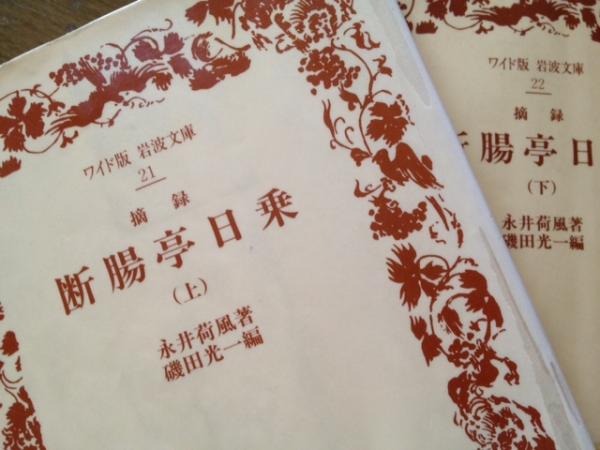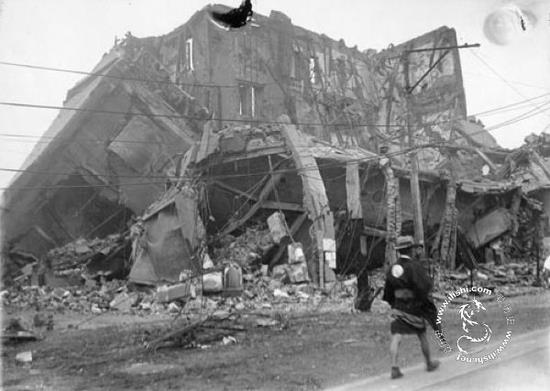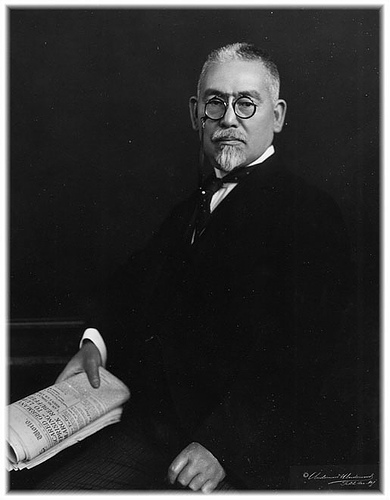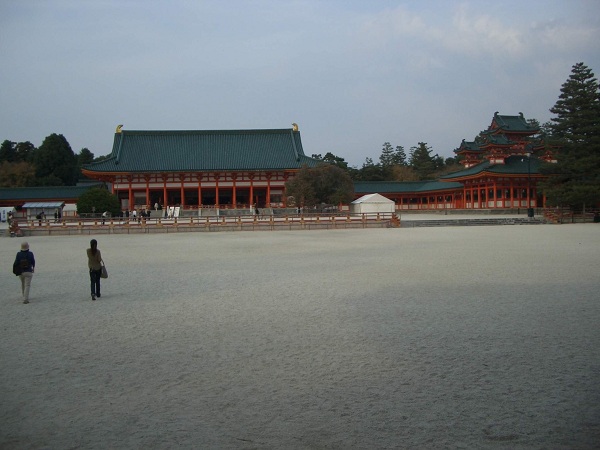Taisho era-the Great Kanto Earthquake that influenced the trend of modern Japanese countries.
Catastrophe caused by earthquake: fire and flood come together.
In the 12th year of Taisho (1923), on September 1st, Kafū Nagai, a writer, read books and kept a diary in his study in Tokyo. The overnight autumn rain didn’t stop until the early morning, and the wind was blowing violently. This is the unique weather around Tokyo Bay at the turn of summer and autumn. Kafū Nagai, as well as millions of families inside and outside Tokyo, are ignorant of a catastrophe that is advancing step by step. Near noon, a major earthquake broke out, plunging Tokyo and even kanto region into an unprecedented disaster. Kafū Nagai wrote down the situation in the corner of the old town of Tokyo in the diary of the day:
"It’s almost noon, and the earth is shaking. I was reading "The Legacy of the Singing Pavilion" under the bookshelf, and suddenly the book fell from the shelf and hit my head, starting to open the window. I saw that the outdoor dust and smoke were indistinguishable. Children cry and the sound of chickens and dogs is endless. Dust and smoke fall under the tiles outside the door, like rain. I’m preparing to flee, and I hear the earth shake again from time to time. Holding a scroll in his hand, he pushed open the gate and took refuge in the courtyard. The vibration started again in a few minutes. Like on a boat, wobbling. I looked at my house in horror, only to see the roof tiles slipping and the windows falling off. After a little meditation, I want to have lunch at Yamagata Hotel on the side of the road. Only to see the wall of the hotel restaurant collapse, the dining table moved to the road, and two or three people were sitting in chairs. I want to go home after dinner, but I can’t go in without shaking. I sat in the courtyard and couldn’t stop trembling. " (The author translated from Kafū Nagai’s Heartbroken Pavilion Day Ride (Excerpted Edition) Yanbo Bookstore, September 1986)

Kafū Nagai’s Heartbroken Pavilion Day Ride, which recorded the Great Kanto Earthquake.
In the Taisho era before video recording was invented, Kafū Nagai’s records restored the tragic image of the sudden moment of disaster. However, he lives in a high-class residential area in Tokyo, which is located in the highlands, and the disaster situation is the least. In fact, the disaster situation of this big earthquake is very tragic.
The epicenter of the earthquake was near Sagami Bay in Tokyo, with a magnitude of 7.9 (later studies showed that it was 7.9-8.3), and the epicenter was 60-70 kilometers away from Tokyo, covering the whole of kanto region. The number of people affected was 1.9 million, with more than 200,000 injured. More than 105,000 people died and disappeared in the earthquake disaster, including Tokyo and Kanagawa Prefecture, which are closest to the epicenter. Nearly 110,000 buildings were completely destroyed and 210,000 were burned. In addition, in Kanagawa Prefecture, which is located at the center of the focal fault, in addition to the collapse of ground buildings caused by violent vibration, there are also tsunamis caused by site subsidence in coastal areas, such as Nebukawa Railway Station in Odawara City, Kanagawa Prefecture, where the train and platform that just entered the station were involved in the sea by mudslides, and hundreds of people died.
Because of the rain that day, most people closed their doors at home, and the earthquake happened at lunch time, so it was not only the earthquake that caused the building to collapse; The residential areas in the old city of Tokyo are almost all traditional wooden buildings in the Edo era, and the fires caused by uncontrolled flames or broken gas pipes spread around with strong winds. There are more than 130 fires in the old city, and countless people have been crushed to death, burned to death and even suffocated.
Media paralysis, rumors, the disaster worse.
The smooth flow of information is undoubtedly the most indispensable part of disaster relief. However, during the Dazheng earthquake, radio and broadcasting did not appear, and telephones were not popularized in ordinary families. As the main means of communication and media in Japan, telegrams and news reports are still the main means. Once these media means are affected and can’t operate normally, it will make the disaster area even more chaotic and disorderly, which will greatly worsen the already terrible disaster.
According to statistics, there were 16 most authoritative news agencies in Tokyo at that time, but the printing work of these media relied on movable type. When the earthquake occurred, movable type shelves collapsed and were lost, printing machines were damaged, and even most news agencies and printing houses were destroyed by fire, and media reporting agencies were suddenly paralyzed and paralyzed. The large media such as Tokyo Daily News, Yasuhiro News and Metropolitan News suffered serious losses in the post-earthquake fire. The Tokyo Daily News, which was the first to recover, also issued its first evening paper on September 5, four days later. Because of the communication and traffic barriers, major media reporters sent to other places can’t go to the disaster area to collect intelligence information, let alone establish effective communication channels with the headquarters and even the government. Gossip and gossip once occupied the media position, such as "Tokyo’s whole territory was destroyed and flooded", "the tsunami has reached the foothills of Chicheng" and "the heads of government were completely destroyed", and such fake news even appeared in the mainstream media.

Historical pictures of the Great Kanto Earthquake in 1923
Rumors have sprung up, and the chaotic situation in the disaster area has become even more unmanageable. Gossip and misinformation were used by right-wing forces with ulterior motives to brew a series of white horrors more fierce than disasters, among which the notorious massacre of Koreans and foreign nationals was jointly brewed by the military, police, secret service and non-governmental organizations.
After the earthquake, some authoritative Japanese media, such as Osaka Asahi Shimbun and Tokyo Current Affairs Newspapers, made a fuss. Since September 3, Koreans who have been bullied by the Japanese for a long time in Japan have been trying to take advantage of the chaos to retaliate. Unfounded rumors about Koreans’ "arson", "poisoning wells", "robbery" and "atrocities" have spread like wildfire, fueling all walks of life in Japan. Egged on by the far-right forces of the military, the army, the police and the "vigilante group" composed of the youth league, the fire brigade and the veterans joined hands up and down, brandishing weapons such as guns, Japanese knives, spears and clubs to desperately search for North Koreans, and brutally killed more than 20,000 North Koreans in just a few days. The Ryukyu people and overseas Chinese were also implicated. According to statistics, hundreds of Chinese were mistaken for Koreans and killed in the disaster. Even Japanese who are dumb, deaf or can’t speak Japanese well because of stuttering are not immune. As for the Japanese who are usually hated by the right-wing forces, it is also doomed: shortly after the disaster, the Shibuya detachment of the Tokyo Gendarmerie brutally killed the famous anarchist Osamu and his six-year-old nephew. Thirteen people, including Hirazawa Jiqi, a famous Japanese labor movement leader during Taisho period, were also collectively shot and killed at Kamedo police station.
How can the destroyed city get back on its feet?
After the earthquake disaster, the Taisho government of Japan started up like a high-speed machine, and quickly organized and mobilized the whole society to invest in earthquake relief. As nearly 60% of the houses in downtown Tokyo were burned down, many residents went to shelters nearby to escape. According to the archives of Tokyo City Hall, by September 5, there will be 160 collective shelters in Tokyo that can accommodate more than 12,000 people. Most of them are concentrated in temples, shrines and schools. The Earthquake Rescue Bureau of Taisho Interior Ministry borrowed military tents from the War Department, and set up refugee camps in Meiji Jingu Waiyuan, Palace Square and other forbidden areas, while the construction of temporary houses began as early as September 4th. The government and the people cooperated, broke the boundaries, and threw themselves into earthquake relief activities one after another. The consortia and religious groups in Kansai were mobilized to quickly promote the construction of shelters. According to the research data, there were 101 refugee camps managed by the municipal and district governments two months after the disaster, with 21,367 households and 86,581 victims. On the other hand, the intensification of narrow shelters has led to the deterioration of public security, and a large number of homeless people have appeared. In order to strengthen social management, the Social Bureau of the Ministry of Internal Affairs, the Metropolitan Police Department, Tokyo Prefecture and Tokyo City jointly cooperated the following year to dismantle tents and move homeless refugees into built temporary residential communities distributed all over Tokyo in a planned way.
In the great earthquake, Tokyo suffered heavy losses, especially in the central area of the capital, which became a devastated and sorrowful "abandoned capital", and the motion of "moving the capital" from the military department was once rampant. Post-disaster urban reconstruction plan is put on the agenda. Before the disaster, Prime Minister Yamamoto Gonnohyō e, who was ordered to form a cabinet because of the death of Prime Minister Kato, set up a "Imperial Capital Revival Review Council", with himself as the president and personally leading the post-disaster revival of Tokyo.
On September 27th, Taisho government issued the "Imperial Capital Revival Plan", intending to rebuild Tokyo’s "Imperial Capital Revival Institute" on the ruins. Through the implementation of this plan, the urban landscape of Tokyo has undergone earth-shaking changes in just a few years. Among them, Goto Xinping played a decisive role.

Goto Xinping
Goto Xinping (1857-1929) was a veteran of the three dynasties in Japanese politics, spanning Meiji, Taisho and Showa, and was also an authority in the field of modern Japanese urban construction. He was in charge of the "Manchuria Railway Co., Ltd." in Taiwan Province, a Japanese overseas colony, and in the northeast of China. Before the earthquake, Prime Minister Yamamoto Gonnohyō e, who was newly appointed to form a cabinet, took a fancy to his talent and tried to invite him to be the interior minister. Goto refused because he didn’t want to get involved in the dispute between political parties. On the day after the earthquake, Goto Xinping took the initiative to find Prime Minister Yamamoto, not only accepting the post of Interior Minister, but also mobilizing Inoue Junnosuke, President of the Bank of Japan, to serve as Tibet Minister through his own contacts. On December 27th of the same year, due to the "Humen Incident" that assassinated Crown Prince Hirohito (later Hirohito) who was regent at that time, Yamamoto Gonnohyō e’s cabinet resigned. In fact, Goto Xinping participated in leading the post-disaster urban recovery plan in Japan for less than four months, but the framework and scheme he set for the whole recovery plan played a great role in the subsequent implementation process.
Goto Xinping worked as the mayor of Tokyo for three years before he joined Yamamoto’s cabinet to participate in the reconstruction of the capital. During his tenure, he conceived a plan for the reconstruction of the old city of Tokyo, but he never had a chance to implement it. Entering Yamamoto’s cabinet, he showed his talents. The Tokyo revival plan includes the following contents: rebuilding Tokyo in the disaster area instead of moving the capital; Established the policy of raising "long-term external debt", and put forward a huge fund of 3 billion yen to raise the recovery cost by issuing public bonds (in fact, less than 600 million yen was finally implemented, but it was an astronomical amount at that time); Adopt the most advanced urban construction mode in Europe and America to plan the capital reconstruction and build old Tokyo into a "non-combustible city" with fire prevention and safety; In order to plan the new capital, requisition land on a large scale, buy land in all affected areas at low prices, rationally plan, broaden urban traffic arteries, establish isolation zones and prevent burning; A large number of parks have been opened in densely populated areas in the city center as shelters and so on. The concept and facilities of the urban renewal plan led by Goto Xinping are still an important reference for Japan’s national earthquake relief.

Many public activity spaces such as parks in Japan also have the function of earthquake refuge.
Because of various limitations, Goto’s revival plan has not been fully implemented, but the face of Tokyo has undergone tremendous changes. As a part of the earthquake recovery, Tokyo has built many landmark buildings, such as Runhui apartment building, Shengqiao, Fuxing Primary School, Fuxing Park, Jiuduanxia Building and so on, which have become the representative urban landscape of Taisho era, and some of them are still important landmarks of Tokyo. In Taisho era, when automobiles were far from being popularized, Goto foresaw the future development trend, and designed a main road with a width of 100 meters (divided into fast and slow lanes), which made the traffic between the city and the intercity smoother. These unimpeded urban traffic networks played an important role in Japan’s economic revitalization after the war. Opening up the park green space as a refuge is also an important measure for disaster prevention in Japanese cities, and turning waste into treasure. For example, the rubble and sand cleared from the ruins will be thrown into the Hengbinhai, where a giant Yamashita Park will be built. In 1935, Japan hosted the Renaissance Commemorative Yokohama Expo, which became a venue and became world-famous. The use of foreign aid funds at that time to build reinforced concrete school buildings for primary schools also began with Goto’s revival plan.
Also, the Taisho government has learned a lesson and vigorously developed communications. The rapid popularization of transistor radio, which appeared shortly after the disaster, has played a positive role in reporting the disaster situation, transmitting positive information, calming and stabilizing the people in the disaster areas and even the whole country.
The catastrophe that changed the direction of modern Japan
The Great Kanto Earthquake in Japan in the 12th year of Taisho was one of the biggest earthquake disasters in the world in the 20th century. The earthquake caused heavy losses, which triggered various social crises and further induced the crisis consciousness hidden in the national psychology of the island countries. Japan’s narrow territory and frequent natural disasters have made it a national consensus to explore overseas living space. After the Great Kanto Earthquake, the militant forces of the military came to power, and fascism kidnapped the Japanese government. In order to make up for the disaster losses and lack of resources and get rid of the domestic crisis, Japan formulated a series of foreign aggression and expansion policies, and targeted the aggression at the northeast of China.
In June, 1927, the Japanese Cabinet held the "Oriental Conference" in Tokyo, which issued the "China Policy Program", and Japan’s attempt to get its hands on the three northeastern provinces of China was obvious. In July of the same year, Cabinet Prime Minister Yoshiichi Tanaka presented "The Empire’s Positive and Fundamental Policy towards Manchuria" to the Emperor, openly declaring that "if you want to conquer China, you must first conquer Manchuria; If you want to conquer the world, you must conquer China first. ". Since then, Japanese militarism has run wild on the road of no return.
In March 1949, the US military bombed Tokyo first, and then Japan was defeated and surrendered in the giant mushroom cloud transpiration from two atomic bombs. At this time, Kafū Nagai, an old writer who once again experienced a deep disaster, was displaced and struggling on the way to escape, just like a large number of Tokyo refugees. Standing on the ruins of Tokyo after the air raid and looking around, Dutch wind can’t help but recall the unusual changes in Japanese society during the Great Kanto Earthquake 23 years ago. He Feng hit the nail on the head and pointed out: "The omen of Japan’s death began to show up in all aspects of society as early as the Tokyo earthquake in the twelfth year of Taisho."
References:
1, Kafū Nagai’s "heartbroken pavilion by day" (excerpt) Tokyo Yanbo Bookstore in 1986.
2. Kudo Miyoko’s Sankei Shimbun published in 2009.
3. Yoshimura Akira’s "Langdong Earthquake" Tokyo Wenyun Chunqiu Society, 1973